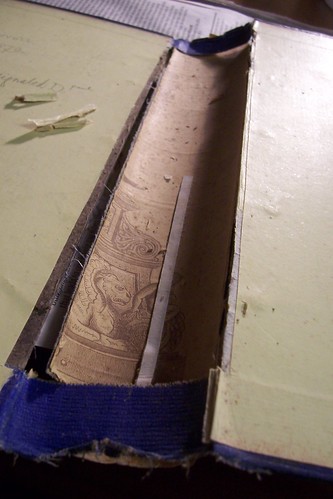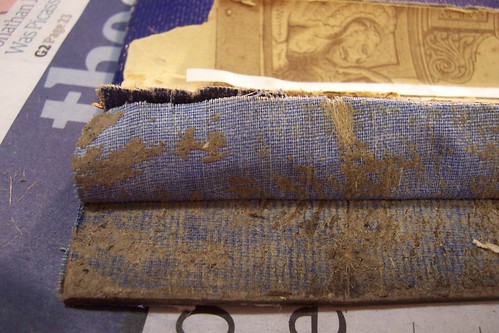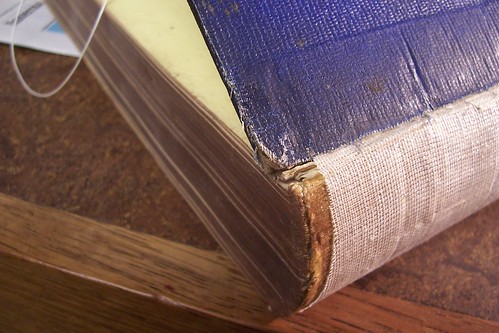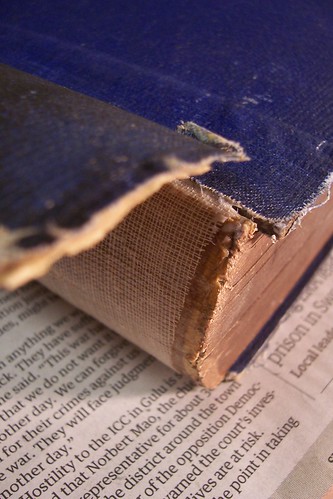
While at Tyndale House I have been given the opportunity to do some repair work in the library. Fortunately, Tyndale House is one of the most well preserved libraries I have seen, mostly due to the fact that none of these books circulate. But I have been able to pluck a number of needy volumes from the shelves and give them what attention I can with so few materials and tools on hand. The above cover and spine is from F.F. Bruce's copy of Codex Claromontanus. As is characteristic of German books from this period, the text-block itself is in excellent condition. But the covers and spine were completely removed from the text.
Ordinarily, I would have recased the entire book, giving it a new cover, spine, and endsheets. But as I don't have any presses or cover material here, I opted to rebuild the book from the inside out. This above picture is of the spine interior. Note the spine card material, which was just some scrap pulp-based paper that had been lying around the bindery in 1852 (when the book was published). The first step here was to seperate the covers from the spine, leaving as much original material intact as possible. I left the spine itself attached to one of the boards, as this gutter had not completely disintegrated through use. I then scraped all the old padding from the spine while being careful not to damage the first few layers of each signature.

The second step was to retrace the steps of the original binding, and create enough space to reproduce it with new materials. This book was very sturdily bound on five flax threads that were then laced into the boards. You can see the remnant of one of these threads in the above photo. (Click for more detail.) My plan was to adhere a piece of mull to the spine with overlaps that would correspond to the distance I peeled back the covers on each board. This would replicate the threads that had originally been holding the covers on the book, but much more permanently.

Step three was the process of reattaching the covers to the book. I simply glued the one and a half inch flap of mull to the back edge of each board, and then glued the flap of cover material I had peeled back over this strip of mull. In the above picture, you can see this finished step on the first cover. The spine is rebuilt, and the mull flows neatly onto the back edge of the cover board.

Here the other cover is attached the same way. This was much trickier, as the spine material was still attached to this board. The final steps will involve affixing the left edge of the spine to the left cover, adding some archival grade paper to the end-sheet gutter margins, and then putting the book back on the shelf. I apologize for this contemporary diversion from the concerns of ancient books, but the methods you see here aren't that different than the sorts of repair that would have occured from the earliest days of the book.

2 comments:
Hi Roger, great to hear from you. I am on hiatus from this blog while I develop some other online projects. I have a lot of material from the Center for the Study of New Testament Manuscripts I hope to post, mostly codicological in nature. I also have a backlog of coptic bookbinding material I haven't had time to organize more clearly.
I had a wonderful time as a reader at Tyndale House in 2007, and haven't been back since. Tyndale House may very well be the best place on earth to live.
Post a Comment